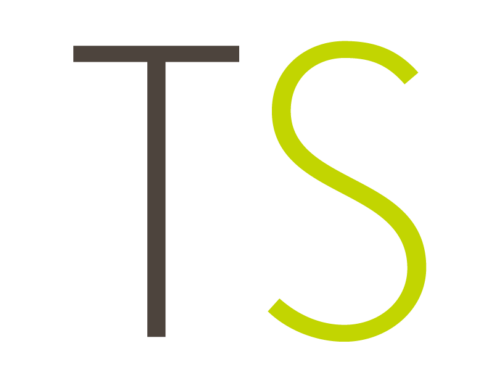Key points of Coronavirus Job Retention Scheme (the Scheme) guidance published on 26/03/20
This guidance dated 27 March 2020 does not constitute legal advice. It summarises the provisions of the Scheme, first announced by the Government on 20 March 2020. The Scheme will enable all UK employers to access support to continue paying part of their employees’ salary for those employees that would otherwise have been laid off during the coronavirus outbreak. It provides employers with an alternative to lay-offs/redundancies as well as financial support to achieve it.
We are monitoring the position closely and will do our best to keep these bulletins updated as further information becomes available.
The Government has also announced that workers who have not taken all of their statutory annual leave entitlement due to COVID-19 are now able to carry it over into the next 2 leave years.
If anyone has any questions leading on from this guidance, they should contact a member of our Employment Team at emp@teacherstern.com.
1. The Basics
The Scheme will be open to all UK employers for at least three months starting from 1 March 2020. It should be up and running by the end of April.
Employers will be able to use an online portal to claim 80% of furloughed employees’ usual monthly wage costs, up to £2,500 a month, plus the associated Employer National Insurance contributions and minimum automatic enrolment employer pension contributions on that wage. While on furlough, the employee’s wage will be subject to usual income tax and other deductions. Employees will also pay automatic enrolment contributions on qualifying earnings.
Employees hired after 28 February 2020 are not eligible. Employees placed on unpaid leave before 28 February are also not eligible.
3 weeks is the minimum length of time an employee can be furloughed for. There is nothing in the guidance which prohibits rotating furlough leave amongst employees, or from claiming multiple periods of furlough leave for the same employee, provided each employee is off for a period of at least 3 weeks.
If an employee is working, but on reduced hours, or for reduced pay, you will not be able to claim reimbursement under the Scheme.
2. Eligibility
The Scheme is open to all UK employers that had created and started a PAYE payroll scheme on 28 February 2020.
Furloughed employees must have been on your PAYE payroll on 28 February 2020, and can be on any type of contract, including full-time employees, part-time employees, employees on agency contracts, employees on flexible or zero-hour contracts.
The Scheme also covers employees who were made redundant since 28 February 2020, if they are rehired by their employer.
To be eligible an employee cannot undertake work for or on behalf of the organisation while on furlough leave. This includes providing services or generating revenue. A furloughed employee can, however, take part in volunteer work or training, as long as it does not provide services to or generate revenue for, or on behalf of your organisation.
Employers should discuss any changes to the employment contract with their staff and obtain their agreement. If sufficient numbers of staff are involved, it may be necessary to engage collective consultation processes to procure agreement to changes to terms of employment. When employers are making decisions in relation to the process, including deciding who to offer furlough to, equality and discrimination laws will apply in the usual way.
To be eligible under the Scheme, employers will need to write to the relevant employees confirming that they have been furloughed and keep a record of the communication.
Employees on sick leave or self-isolating should receive Statutory Sick Pay, but can be furloughed after any period of sick leave has ended. Employees who are shielding in line with public health guidance can be placed on furlough.
If an employee has more than one employer they can be furloughed for each job. Each job is separate, and the cap applies to each employer individually. This suggests that there is no bar to an employee earning other income from another employer if they have more than one employer.
If your employee is eligible for Statutory Maternity Pay (SMP) or Maternity Allowance, the normal rules apply, and they are entitled to claim up to 39 weeks of statutory pay or allowance. If you offer enhanced (earnings related) contractual pay to women on Maternity Leave, this is included as wage costs that you can claim through the Scheme. The same principles apply where an employee qualifies for contractual adoption, paternity or shared parental pay. Employees on family leave can curtail leave early and be placed on furlough leave, either by giving the usual 8 weeks’ notice or agreeing a shorter period with their employer, which would enable the employer to benefit from the Scheme.
3. What can you claim?
You will receive a grant from HMRC to cover the lower of 80% of an employee’s regular wage or £2,500 per month, plus the associated Employer National Insurance contributions and minimum automatic enrolment employer pension contributions.
Employer National Insurance Contributions and automatic enrolment contribution on any additional top-up salary will not be funded nor will any voluntary automatic enrolment contributions above the minimum mandatory employer contribution.
Employers must pay the furloughed employees the lower of 80% of their regular wage or £2,500 per month, they cannot pay less. They can pay more but are not obliged to under the Scheme.
The Government intends to issue more guidance on how employers should calculate their claims for Employer National Insurance Contributions and minimum automatic enrolment employer pension contributions, before the Scheme becomes live.
In the meantime, it has published the following guidance:
- For full time and part time salaried employees, the employee’s actual salary before tax, as of 28 February should be used to calculate the 80%. Fees, commission and bonuses should not be included.
- For employees whose pay varies if the employee has been employed for a full twelve months prior to the claim, you can claim for the higher of either the same month’s earning from the previous year or their average monthly earnings from the 2019-20 tax year. If the employee has been employed for less than a year, you can claim for an average of their monthly earnings since they started work. If the employee started in February 2020, use a pro-rata for their earnings so far to claim.
- Once you’ve worked out how much of an employee’s salary you can claim for, you must then work out the amount of Employer National Insurance Contributions and minimum automatic enrolment employer pension contributions you are entitled to claim.
- Employees on National Minimum Wage must be paid the lower of 80% of their salary, or £2,500 even if, based on their usual working hours, this would be below NMW. However, if they are required to complete training courses then they must be paid at least the NMW for the time spent training.
HMRC will retain the right to retrospectively audit all aspects of claims made. You can only submit one claim at least every 3 weeks backdated to 1 March if applicable.
Employees’ employment rights are unchanged. This includes Statutory Sick Pay, maternity rights, other parental rights, rights against unfair dismissal and to redundancy payments.
4. Where can I find more information?
Further information can be found at:
https://www.gov.uk/guidance/claim-for-wage-costs-through-the-coronavirus-job-retention-scheme and on the Government’s new website at: https://www.businesssupport.gov.uk/coronavirus-job-retention-scheme/
If anyone has any questions leading on from this guidance, they should contact a member of our Employment Team at emp@teacherstern.com.






